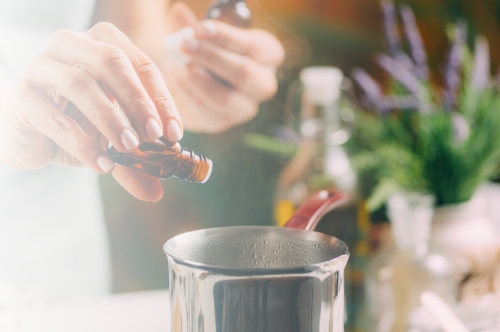What Are Preservatives and Their Impact on Your Health?

What are Preservatives?
Preservatives stand as stalwart guardians against the relentless forces of microbial spoilage, playing a pivotal role in preserving the integrity and safety of an array of consumable and perishable goods. Across a spectrum of industries encompassing food, beverages, pharmaceuticals, cosmetics, and more, these compounds serve as the frontline defense, thwarting the proliferation of harmful bacteria, fungi, and molds that threaten product quality and consumer well-being.
In the realm of food and beverages, preservatives wield their protective prowess to extend shelf life, maintain freshness, and safeguard against microbial contamination. By inhibiting the growth of pathogenic microorganisms and oxidative processes, preservatives ensure that perishable items like dairy products, canned goods, and processed snacks remain safe for consumption over extended periods. From the humble sodium benzoate preserving the tangy zest of a jar of pickles to the versatile potassium sorbate safeguarding the velvety smoothness of a bottle of fruit juice, these preservatives are the unsung heroes behind the longevity of countless pantry staples.
In the pharmaceutical domain, preservatives serve as indispensable components in drug formulations, ensuring stability, efficacy, and safety. By preventing microbial contamination in oral suspensions, injectable solutions, and topical medications, preservatives uphold stringent quality standards and regulatory requirements, safeguarding patient health and well-being.
Moreover, in the realm of cosmetics and personal care products, preservatives play a crucial role in preventing microbial growth and ensuring product integrity. From moisturizers to shampoos, preservatives like parabens and phenoxyethanol preserve the efficacy and safety of these products, allowing consumers to indulge in their beauty rituals without fear of contamination or deterioration.
In essence, preservatives are the silent sentinels that stand between perishable goods and the ravages of time and microbial invaders. Their multifaceted functions encompass not only the preservation of product quality and safety but also the assurance of consumer confidence and satisfaction. As guardians of shelf life and purveyors of product integrity, preservatives embody the essence of what it means to safeguard the well-being of consumers in an ever-evolving marketplace.
Understanding the Purpose and Types of Preservatives
The primary objective of preservatives is to prolong the viability of products by impeding microbial proliferation, oxidative processes, and enzymatic breakdown. Preservatives are typically categorized into two main groups: natural and synthetic. Natural preservatives, such as salt, sugar, vinegar, and various plant extracts, have stood the test of time, serving as reliable guardians of food freshness for centuries. These natural compounds exert their preservative effects through mechanisms like osmotic pressure and antimicrobial properties, effectively inhibiting spoilage organisms and extending shelf life.
In contrast, synthetic preservatives are meticulously engineered chemical compounds tailored to combat microbial growth and enhance product longevity. Examples of synthetic preservatives abound in the modern food industry, including butylated hydroxyanisole (BHA), butylated hydroxytoluene (BHT), sodium benzoate, and potassium sorbate. These synthetic additives are prized for their potency and efficacy in thwarting microbial spoilage and oxidative degradation, thus ensuring the preservation of product quality and safety.
Whether derived from nature's bounty or synthesized in laboratories, preservatives play a critical role in modern food preservation practices. They serve as stalwart guardians, safeguarding against microbial invasion and oxidative deterioration to prolong the shelf life of perishable goods and uphold consumer confidence.
The Impact of Preservatives on Food and Health
Preservatives are indispensable additives in the modern food industry, yet concerns persist regarding their potential health implications. While these compounds play a crucial role in preventing food spoilage and ensuring product safety, emerging research has shed light on possible adverse effects associated with certain synthetic preservatives, prompting scrutiny and debate within the scientific community.
Among the synthetic preservatives under scrutiny are butylated hydroxyanisole (BHA) and butylated hydroxytoluene (BHT), commonly used to inhibit oxidation and extend the shelf life of processed foods. Despite their effectiveness in preserving product freshness, studies have raised concerns about their potential carcinogenic properties and adverse health effects. Research suggests that prolonged exposure to high levels of BHA and BHT may increase the risk of cancer and contribute to allergic reactions and other health issues in sensitive individuals.
Furthermore, excessive consumption of foods containing synthetic preservatives may disrupt the delicate balance of gut microbiota, leading to gastrointestinal problems and compromising overall health. Disruption of gut microbiota has been linked to various health conditions, including inflammatory bowel diseases, obesity, and metabolic disorders, highlighting the potential ramifications of prolonged exposure to synthetic preservatives in the diet.
However, it's crucial to recognize that the safety of preservatives is rigorously regulated by government agencies tasked with protecting public health and safety. In the United States, the Food and Drug Administration (FDA) oversees the safety of food additives, including preservatives, through a comprehensive regulatory framework. Similarly, in Europe, the European Food Safety Authority (EFSA) evaluates the safety of food additives and establishes maximum allowable limits based on scientific evidence and risk assessments.
These regulatory agencies conduct thorough safety assessments of preservatives before approving their use in food products, considering factors such as toxicity, exposure levels, and potential health effects. Maximum allowable limits are set to ensure that consumers are not exposed to unsafe levels of preservatives in their diets, providing an additional layer of protection against potential health risks.
In conclusion, while concerns have been raised about the potential health effects of synthetic preservatives, it's important to recognize that their safety is closely monitored and regulated by government agencies. Consumers can make informed choices about the products they consume by staying informed about common preservatives, reading ingredient labels carefully, and adhering to recommended dietary guidelines. By balancing the benefits of food preservation with potential health considerations, individuals can navigate the marketplace with confidence and prioritize their well-being.
Choosing Wisely: Making Informed Decisions about Preservatives
When navigating the vast array of products lining supermarket shelves, making informed decisions about preservatives is paramount to safeguarding one's health and well-being. While preservatives serve a crucial role in extending shelf life and ensuring product safety, their potential impact on human health cannot be overlooked. Therefore, adopting a discerning approach to selecting products containing preservatives is essential for consumers seeking to minimize their exposure to potentially harmful additives.
One strategy for making informed decisions about preservatives is to prioritize products that utilize natural preservatives or employ minimal amounts of synthetic additives. Natural preservatives, such as salt, sugar, vinegar, and certain plant extracts, offer a safer alternative to their synthetic counterparts, as they are derived from natural sources and have been used for centuries in food preservation practices. By opting for products formulated with natural preservatives, consumers can reduce their exposure to synthetic chemicals and mitigate potential health risks associated with long-term consumption.
Additionally, reading ingredient labels with scrutiny and familiarity with common preservatives can empower consumers to make educated choices about the products they purchase and consume. By being vigilant about identifying and understanding the preservatives listed on product labels, consumers can assess their potential impact on health and make informed decisions accordingly. Furthermore, staying informed about emerging research and regulatory developments related to preservatives can provide valuable insights into their safety and efficacy, enabling consumers to make proactive choices aligned with their health goals.
Ultimately, choosing wisely when it comes to preservatives involves striking a balance between the benefits of product longevity and the potential risks to personal health. By opting for products with natural preservatives, minimizing exposure to synthetic additives, and staying informed about common preservatives and regulatory standards, consumers can navigate the marketplace with confidence and prioritize their well-being in their purchasing decisions.
Frequently Asked Questions
1. What types of products commonly contain preservatives?
Preservatives are commonly found in processed foods, beverages, canned goods, cured meats, snacks, cosmetics, and pharmaceuticals.
2. Are all preservatives harmful to health?
Not all preservatives are harmful to health. Many preservatives, both natural and synthetic, are considered safe for consumption when used in accordance with regulatory guidelines.
3. What role do preservatives play in skincare and cosmetics?
Preservatives in skincare and cosmetics help prevent microbial contamination and extend the shelf life of products, ensuring they remain safe for use over time.
4. Can I find preservative-free products?
Yes, there are preservative-free products available on the market, particularly in the natural and organic product categories. However, it's important to note that preservative-free products may have a shorter shelf life and require proper storage and handling to maintain freshness












